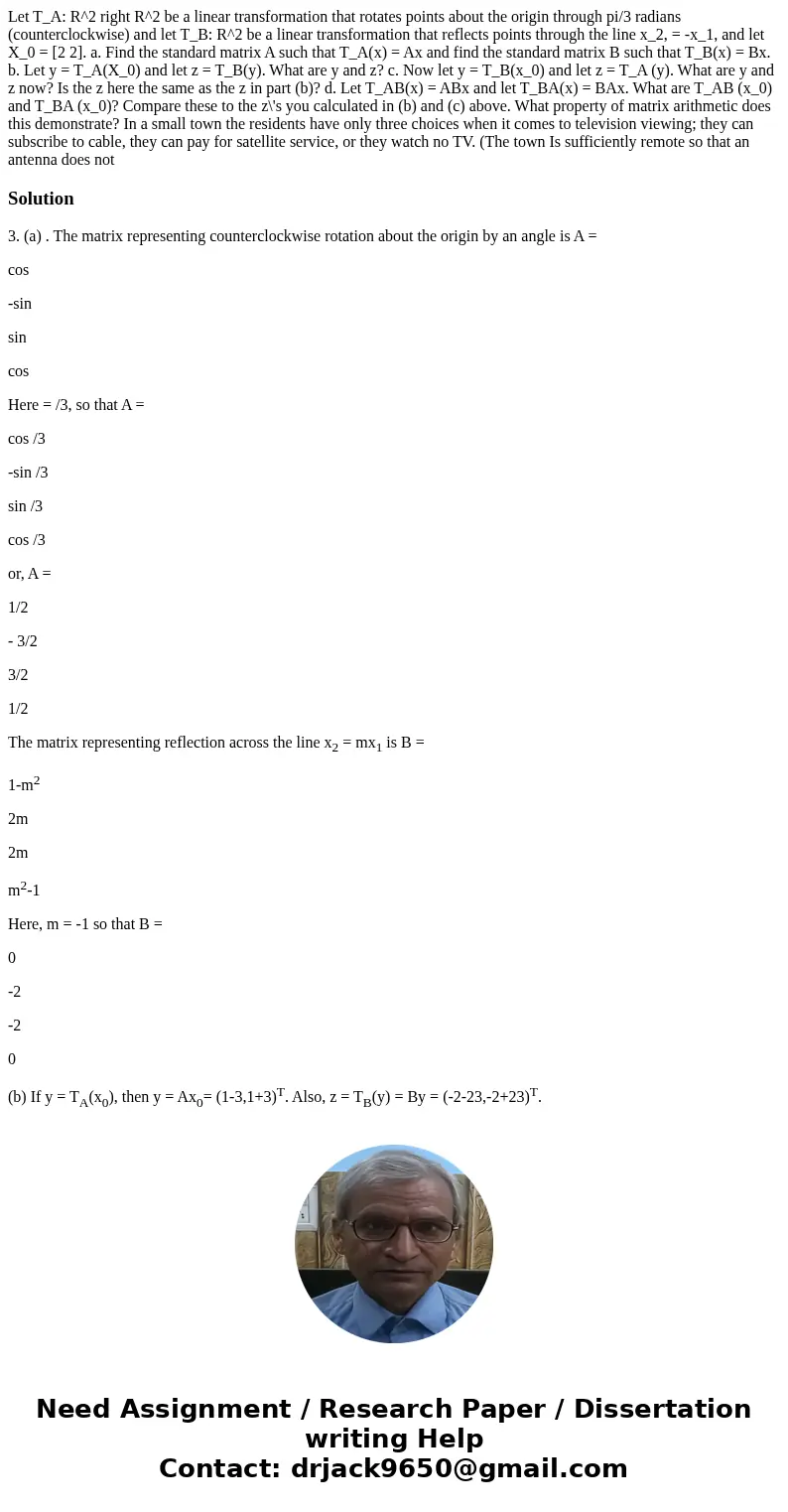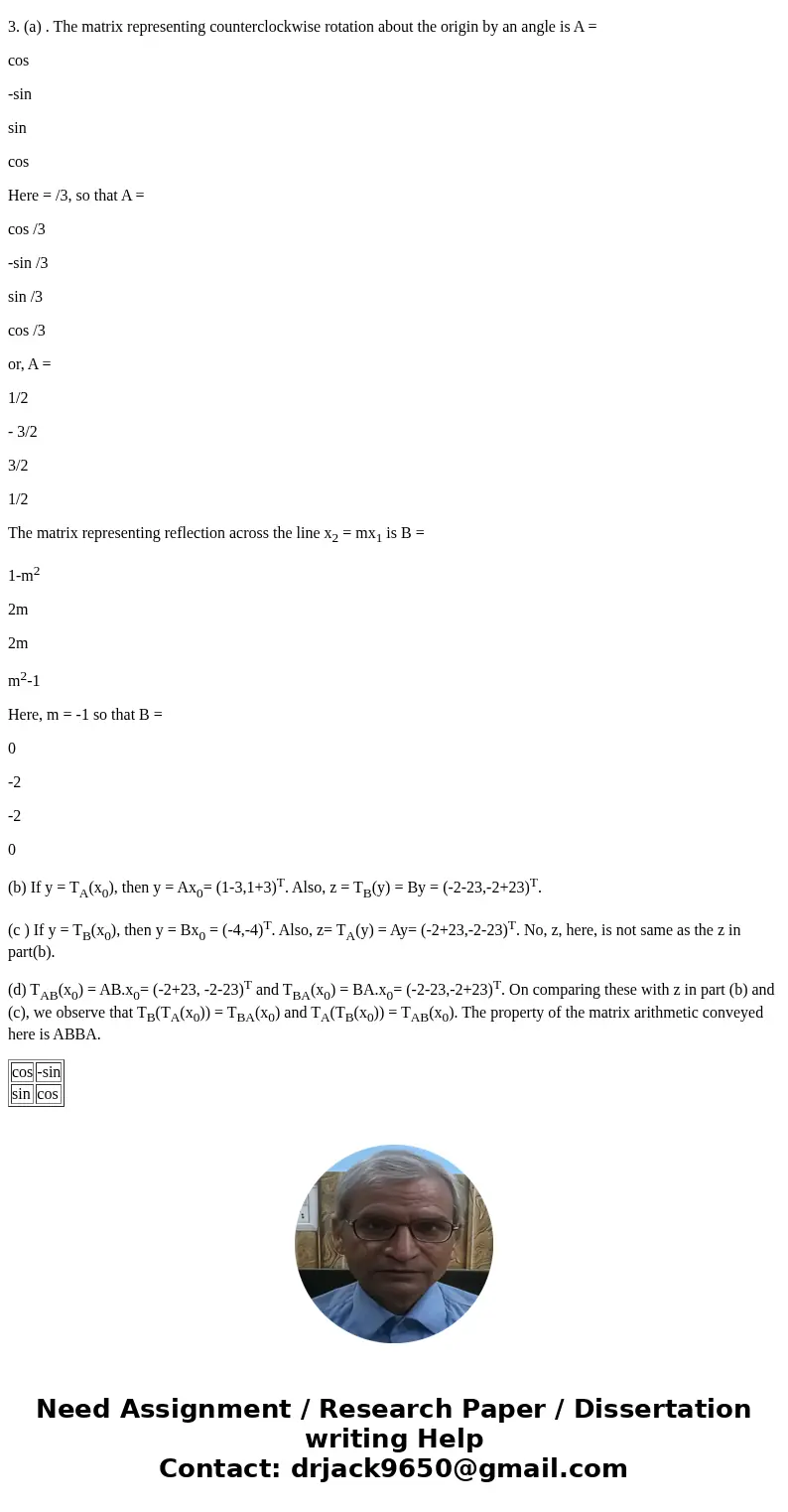Let TA R2 right R2 be a linear transformation that rotates p
Solution
3. (a) . The matrix representing counterclockwise rotation about the origin by an angle is A =
cos
-sin
sin
cos
Here = /3, so that A =
cos /3
-sin /3
sin /3
cos /3
or, A =
1/2
- 3/2
3/2
1/2
The matrix representing reflection across the line x2 = mx1 is B =
1-m2
2m
2m
m2-1
Here, m = -1 so that B =
0
-2
-2
0
(b) If y = TA(x0), then y = Ax0= (1-3,1+3)T. Also, z = TB(y) = By = (-2-23,-2+23)T.
(c ) If y = TB(x0), then y = Bx0 = (-4,-4)T. Also, z= TA(y) = Ay= (-2+23,-2-23)T. No, z, here, is not same as the z in part(b).
(d) TAB(x0) = AB.x0= (-2+23, -2-23)T and TBA(x0) = BA.x0= (-2-23,-2+23)T. On comparing these with z in part (b) and (c), we observe that TB(TA(x0)) = TBA(x0) and TA(TB(x0)) = TAB(x0). The property of the matrix arithmetic conveyed here is ABBA.
| cos | -sin |
| sin | cos |


 Homework Sourse
Homework Sourse